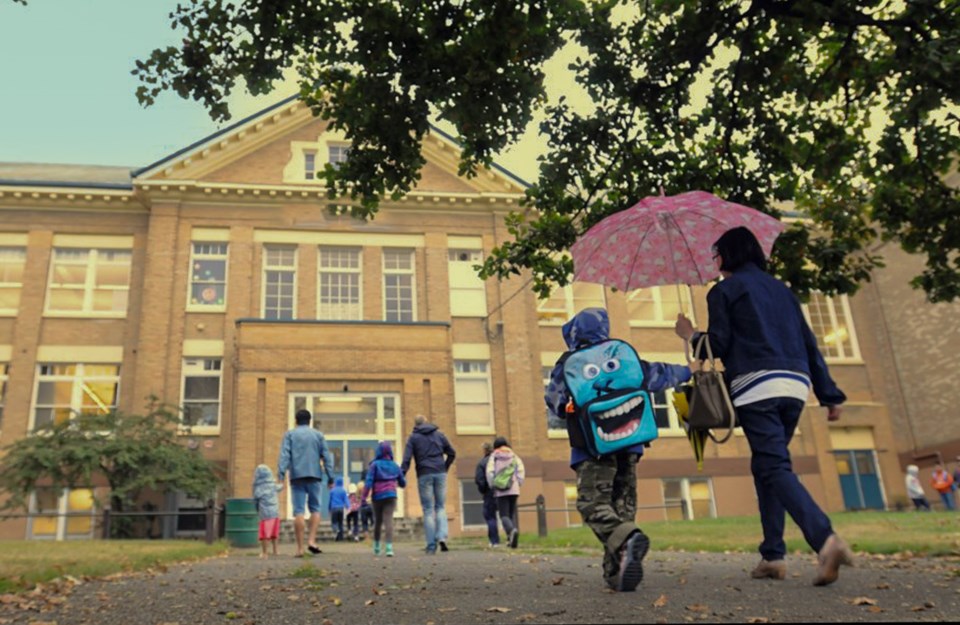Researchers from the University of B.C.’s Vancouver School of Economics have found that data collected routinely by the B.C. government can be used to predict which students are likely to drop out of high school.
David Green, co-lead of the newly announced Stone Centre on Wealth and Income Inequality at UBC, and co-author William Warburton, shared their findings recently in the Canadian Public Policy journal.
Green and Warburton used anonymized government data that included insight into the neighbourhood a student grew up in, their family structure, whether mental illness was present and whether the family received income assistance.
“These data sources illustrate that social issues including poverty, crime, homelessness and drug and alcohol abuse primarily manifest among those who do not complete high school,” their study said.
“We also showed that it is straightforward to identify children who are at extreme risk of not completing high school with quite high accuracy.”
'Disadvantaged backgrounds'
More specifically, they could identify 2,000 children — about five per cent of each cohort — that already at age 10 had an almost 70 per cent probability of not completing high school.
“We showed how disadvantaged backgrounds can lead to disadvantages and vulnerabilities later in life, with a real emphasis on one pinch point: dropping out of high school,” said the authors in an article posted July 25 on UBC’s website.
They also found that at least three-quarters of any birth cohort who end up homeless have dropped out of high school. More than three-quarters who end up involved with the criminal justice system have dropped out of high school.
“So there’s a place where we should be putting a lot of attention,” they said in the article.
For their study, Green and Warburton selected birth years 1976 to 1997 to match up with graduation data they used from 1992 to 2017.
Several B.C. ministries made data available, including the Ministry of Children and Family Development sharing information that identified each child in care at the end of each month from April 1998 to February 2019.
The Ministry of Public Safety and Solicitor General provided researchers with a file on adults interacting with BC Corrections. The Ministry of Health shared a file that contained records of all in-patient hospital stays, diagnoses, procedures and dates.
'Poor academic records'
A question the researchers posed to themselves was: how well can the administrative data to which we have access (which, though extensive, is only a subset of that collected by provincial governments) predict at an early age which children will eventually land in each of our educational categories?
“The answer, we find, is remarkably well,” they wrote.
“Half of the students who did not graduate are in the bottom 15 per cent of predicted educational attainment in Grade 4. While 31 per cent of children in the bottom five per cent of predicted educational attainment in Grade 4 graduate, most of those have poor academic records. Only one per cent of those in this bottom ventile graduate on time with English 12 and at least an average GPA.”
At first blush, the researchers said, the solution seems clear: governments should invest in proven interventions early in children’s lives and improve both efficiency and equity in society.
But there are challenges, they said, citing an informal discussion with a B.C. cabinet member who pointed to a deficiency in public trust as one challenge, noting the long time between investment and payoff, and low levels of public trust in statements made by government officials.
“On another front, senior civil servants pointed to the problem of ‘silos’ in the very large public sector,” they said.
“For example, information on who needs services is available to the Ministry of Education, but it is not available to the ministries that would provide relevant services such as the Ministry of Children and Family Development, or Health.”
Independent science officer
Green and Warburton make several recommendations for effective interventions to address social issues and guide children onto better trajectories, including the appointment of an independent science officer.
Such a person would not be affiliated with the government and be responsible to oversee the allocation of services to children, to select measures for success and to identify interventions that did not achieve their objectives and those that did.
The researchers were also clear that money is not being invested in services and interventions when a young student most needs support and guidance.
They suggested it would be worthwhile to spend up to $9,000 per student in Grade 4 “who is near the bottom of the distribution of educational outcomes, for an intervention that increases their high school graduation rate from 30 per cent to 40 per cent.”





